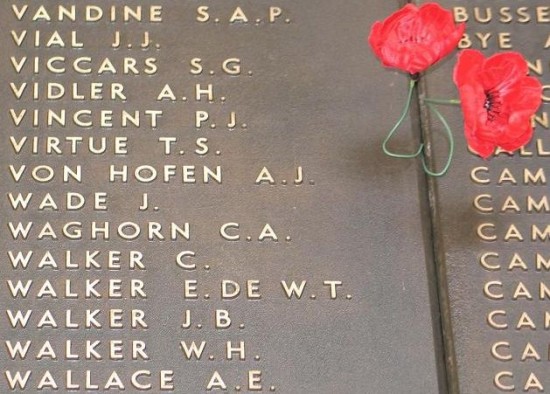Discovering Private Walker: Using new technologies to catalogue old relics
There is a mess tin on display in the Gallipoli gallery that is rusted and full of holes. It was found over 90 years ago scattered with dozens of other pieces of kit around the Lone Pine position at Gallipoli in January 1919 by staff from the Australian War Records Section.
Despite sitting out in the elements for almost four years before it was collected, amazingly the name of the soldier who used it is still legible, scratched into the bottom of the tin. 90 years after it was collected, using records available online, I was able to identify the soldier who used it and discover some of the story of his war.
The name scratched in cursive script on the mess tin is ‘E WalKer’. His unit, ‘1 AIF’ ‘ (presumed to mean '1st Battalion AIF’), is also scratched on the tin along with some other letters (possibly 'ER'). When I began to research and catalogue this mess tin I realised it was highly probable that whoever used it was killed during the campaign and that was why the tin had been discarded. So, although I could have initially checked the embarkation or nominal rolls to see who served in the 1st Battalion with that name, I decided to quickly check the Roll of Honour to see if I could find any ‘E Walkers’ who died at Lone Pine.

I found nine E Walkers that died in the First World War. Three died at Gallipoli: 203 Trooper Eric Walker (3rd Light Horse Regiment), who died in August while the Regiment was at Quinn’s Post, 1832 Private Eric De Witte Talmage Walker ( 1st Battalion) who died at Lone Pine in August and 247 Private Ernest Percy Walker (11th Battalion), who died at the landing on 25 April.
So of those three, Eric De Witte Talmage Walker appeared to be the most likely owner of the mess tin, as he served with 1 Battalion AIF and was killed between 6-9 August at Lone Pine. There was no Red Cross wounded and missing file for Eric, so I checked his personal service file, which has been digitised by the National Archives of Australia.
His identity was reinforced when I discovered that the way 'Walker' was scratched into the bottom of the mess tin was the same as the way Eric signed his attestation papers (at the bottom of page 1 in his service record) when he enlisted - one prominent feature being the enlarged 'K' in the middle of his surname.
From the resources available online (including the digitised unit war diaries for the 1st Battalion), I discovered that Eric was 20 years old and working as a labourer when he enlisted in the AIF on 12 January 1915. As he was under 21 he obtained permission from both his mother and father to enlist. Eric had a small amount of military experience, having served six months with cadets and six months with the Militia. He embarked from Sydney with the 4th reinforcements of the 1st Battalion on 10 April 1915, aboard HMAT Argyllshire, bound for Egypt. They were still at sea when the famous landing took place at ANZAC Cove on 25 April 1915. Eric joined his unit on Gallipoli on 26 May, one of 134 reinforcements for the 1st Battalion to arrive that day. He was allocated to the battalion's 'B' Company.
Eric served on Gallipoli for over two months and took part in the August offensive. He was killed some time between 6 and 9 August 1915, either during the attack on the Turkish trenches at Lone Pine, or the subsequent Turkish counter attack. He was only 21 years old. His body was not recovered in 1915, but when the unburied remains of the men killed at Lone Pine were interred in the newly created Lone Pine Cemetery after the war, his remains were believed to be among them. As his exact grave location was unknown a memorial headstone was placed in Lone Pine cemetery to commemorate him.
Eric Walker is commemorated here at the Memorial on panel 31 of the Roll of Honour. He is also commemorated on the War Memorial at Wahroonga in New South Wales and on the Warrawee Public School Roll of Honour.




